Posté par Sébastien Bontemps, le 4 mai 2015;
- Date limite : 22 juin 2015
- Date et lieu du colloque : 6-8 avril 2016, Clermont-Ferrand/Aubusson/Limoges
 Shared invention (Clermont-Ferrand, Aubusson, Limoges, 6-8 Apr 16) Clermont-Ferrand – Aubusson – Limoges, April 6 – 08, 2016 Shared invention (Clermont-Ferrand, Aubusson, Limoges, 6-8 Apr 16) Clermont-Ferrand – Aubusson – Limoges, April 6 – 08, 2016
Deadline: Jun 22, 2015
SHARED INVENTION FROM ANTIQUITY TO THE XXIST CENTURY International Colloquium Organized by Laurence RIVIALE and Jean-François LUNEAU, lecturers, Blaise Pascal University, Clermont-Ferrand (France, Auvergne) Partnership: Musée national Adrien Dubouché, Limoges (France) Cité de la Tapisserie, Aubusson (France)
« Shared invention », or collective creation, is the chosen theme for an international colloquium which intends to foster the best conditions to enable art historian specialists of various periods and fields, to understand better creation in fine arts as well as production in decorative arts. In terms of works of art, in numerous cases, and throughout history, significant differences have . . . → En lire plus
Posté par Sébastien Bontemps, le 4 mai 2015;
- Date et lieu du colloque : 4-5 juin 2015, Paris, Jeu de paume
 Quand les images viennent au monde (Paris, 4-5 Jun 15) Jeu de Paume – Paris, June 4 – 05, 2015 Quand les images viennent au monde. Dynamis de l’image III Quand les images viennent au monde (Paris, 4-5 Jun 15) Jeu de Paume – Paris, June 4 – 05, 2015 Quand les images viennent au monde. Dynamis de l’image III
Que se passe-t-il quand les images viennent au monde ? Comment une imago mundi peut surgir pour nous aujourd’hui, alors que les liens spatio-temporels du vivre ensemble ont volé en éclats au seul avantage de revendications identitaires désordonnées qui s’appuient sur des signes dont on a depuis longtemps oublié l’origine ? Nous avons décidé de faire confiance aux images, à leur déconcertante générosité, à leur puissance qui garde en réserve d’infinies possibilités d’actualisation, pour les suivre à travers des géographies et des temporalités hétérogènes, écartant les prétentions définitoires ultimes, mais . . . → En lire plus
Posté par Jean-Marie Guillouët, le 1 mai 2015;
- Date et lieu du séminaire : 13 juin 2015, Nantes, MSH Ange-Guépin
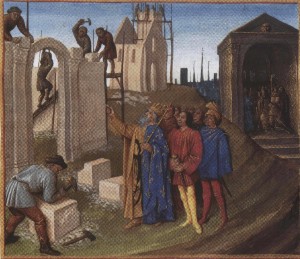 Ce séminaire est organisé dans le cadre du programme « Pour une histoire du geste technique : valeur sociale et culturelle des savoir-faire artisanaux et artistiques aux époques préindustrielles » agréé par le Conseil scientifique de la MSH Ange-Guépin en novembre 2013. Ce séminaire est organisé dans le cadre du programme « Pour une histoire du geste technique : valeur sociale et culturelle des savoir-faire artisanaux et artistiques aux époques préindustrielles » agréé par le Conseil scientifique de la MSH Ange-Guépin en novembre 2013.
Si le geste technique a déjà fait l’objet de nombreux travaux de la part des anthropologues ou des ethnologues, il n’a que dernièrement été considéré comme un objet d’étude par les historiens et les historiens de l’art. Ce séminaire de recherche, accueilli par la Maison des sciences de l’homme Ange-Guépin de 2014 à 2017, se propose donc d’aborder l’étude des savoir-faire artisanaux . . . → En lire plus
Posté par Denis Dubois, le 30 avril 2015;
- Date et lieu du colloque : 11-13 mai 2015, Paris, musée des Arts décoratifs
 Depuis quelques décennies, la mode a cessé d’être conçue comme un répertoire de formes en perpétuelle évolution, que le chercheur s’épuiserait à observer pour en faire l‟inventaire, aussi illusoire qu’inutile. A la suite des travaux de Georg Simmel, Norbert Elias, Roland Barthes, etc, les manières de vêtir et de parer le corps ont été abordées à partir de concepts qui ont inscrit l’individu dans un réseau de normes sociales. Les recherches menées en histoire du corps ont ajouté de nouvelles dimensions à ce domaine de recherche. Sur ces bases, et par référence aux processus contemporains qui promeuvent les modes de masse ou uniformisent la gestion des attitudes et . . . → En lire plus Depuis quelques décennies, la mode a cessé d’être conçue comme un répertoire de formes en perpétuelle évolution, que le chercheur s’épuiserait à observer pour en faire l‟inventaire, aussi illusoire qu’inutile. A la suite des travaux de Georg Simmel, Norbert Elias, Roland Barthes, etc, les manières de vêtir et de parer le corps ont été abordées à partir de concepts qui ont inscrit l’individu dans un réseau de normes sociales. Les recherches menées en histoire du corps ont ajouté de nouvelles dimensions à ce domaine de recherche. Sur ces bases, et par référence aux processus contemporains qui promeuvent les modes de masse ou uniformisent la gestion des attitudes et . . . → En lire plus
Posté par Sabine Pasdelou, le 29 avril 2015;
- Date et lieu des rencontres : 11 mai 2015, Paris, café Baron
 Le Bistrot culture « L’usage des réseaux sociaux pour la veille en matière de recherche et d’enseignement » se tiendra le lundi 11 mai 2015, à partir de 18h30 et sera animé par Sabine Berger, MCF en histoire de l’art médiéval à l’université Paris-Sorbonne. Le Bistrot culture « L’usage des réseaux sociaux pour la veille en matière de recherche et d’enseignement » se tiendra le lundi 11 mai 2015, à partir de 18h30 et sera animé par Sabine Berger, MCF en histoire de l’art médiéval à l’université Paris-Sorbonne.
Pour la collecte d’informations et d’actualités en rapport avec nos domaines d’activité ou nos centres d’intérêt, Internet est à l’heure actuelle incontournable. Ce Bistrot Culture sera consacré à la question de la veille spécifique au métier d’enseignant-chercheur, l’accent étant bien évidemment mis sur l’histoire de l’art (et disciplines connexes). La rencontre sera centrée sur les réseaux sociaux numériques de contact – généralistes (Facebook, Twitter, etc.) et professionnels (LinkedIn, Viadeo, Academia, etc.) – et/ou de contenu . . . → En lire plus
Posté par Ludovic Jouvet, le 28 avril 2015;
Anne-Laure Imbert (dir.), Regardeurs, flâneurs et voyageurs dans la peinture, Paris, 2015
 Broché, 16 x 24 cm Broché, 16 x 24 cm
255 p. Ill. NB et couleurs
30 €
ISBN : 978-2-85944-892-9
Pour découvrir l’ouvrage sur le site des Publications de la Sorbonne, cliquez ici.
Cette enquête sur les figures de regardeurs, de flâneurs et de voyageurs dans la peinture constitue une entrée particulière dans le champ des études de la genèse et du fonctionnement de l’art du paysage. Dans tout un pan de la tradition européenne, et suivant le modèle antique rapporté par Pline . . . → En lire plus
Posté par Stéphanie Danaux, le 27 avril 2015;
- Date et lieu du séminaire : 21 mai 2015, Paris, ISCC
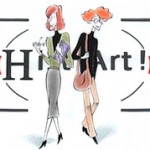 DocEntreprise. Docteurs en SHS acteurs de leur projet professionnel DocEntreprise. Docteurs en SHS acteurs de leur projet professionnel
Séminaire n°1/5 : « S’OUVRIR. Travailler dans le secteur privé après le doctorat » organisé par l’association Hist’Art !
PRÉSENTATION Si la France forme entre 10000 et 11000 docteurs par an, moins de 15 % envisageraient une poursuite de carrière hors du secteur académique. Ce constat se vérifie particulièrement chez les doctorants en SHS, moins enclins à rejoindre le secteur privé (petites et moyennes entreprises, grands groupes, associations, organisations non gouvernementales ou encore création d’entreprise). En parallèle, la chute continuelle du nombre de postes de chercheurs au CNRS, passée de 400 en 2010 à 300 en 2013, et celle du nombre de postes de maître de conférences, qui . . . → En lire plus
Posté par Denis Dubois, le 26 avril 2015;
- Date limite : 15 mai 2015
- Date et lieu du colloque : 19-20 juin 2015, Italie, Lucca
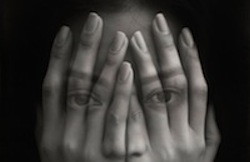 Session du troisième congrès international Euroacademia portant sur « Identities and Identifications: Politicized Uses of Collective Identities » ( Lucca, Italie, 19 et 20 mai 2015). Session du troisième congrès international Euroacademia portant sur « Identities and Identifications: Politicized Uses of Collective Identities » ( Lucca, Italie, 19 et 20 mai 2015).
Identities are socially attributed imaginary significations. They are part of the dynamic projects of individual and social autonomy (C. Castoriadis). Nothing shapes, represents or reflects better the imaginary constructions of particular societies than arts. The artistic perception and practice are often identity making processes while the object of art can be a direct or indirect embodiment of experienced identities. At the outcome line of the process of artistic creation, the perception of the objects of art . . . → En lire plus
Posté par Sébastien Bontemps, le 24 avril 2015;
- Date limite : 15 juin 2015
- Date et lieu de la journée d'étude : 23 octobre 2015, The Cleveland Museum of Art, Ohio, USA
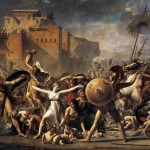 Unity and Division in the History of Art (Cleveland, 23 Oct 15) Unity and Division in the History of Art (Cleveland, 23 Oct 15)
Cleveland, OH, October 23, 2015
Deadline: Jun 15, 2015
Unity and Division in the History of Art 41st Annual Cleveland Symposium Friday, October 23, 2015 The Cleveland Museum of Art, Cleveland, Ohio
In what ways can the visual arts unite or divide humanity? How can their subjects and functions stir us to collaboration or lead to disagreement, apathy, or even war? How do objects themselves change when their relationships to one another, or to the viewer, are altered or rearranged? The Case Western Reserve University/Cleveland Museum of Art Joint Graduate Program in Art History and Museum Studies invites submissions from all areas of art history that address unity, . . . → En lire plus
Posté par Pascale Dubus, le 23 avril 2015;
- Date limite : 8 mai 2015
- Date et lieu du colloque : 3-6 février 2016, Etats-Unis, Washington, DC
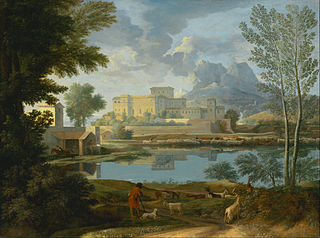 Art history and landscape studies have a common origin and shared scholarly trajectories, yet the extent of their reciprocal influence is by no means certain. This session aims to look both forward and back, exploring the fluctuating and sometimes problematic historical connections between art history and landscape studies while investigating the potential for more productive interchange between the two disciplines in the future. Art history and landscape studies have a common origin and shared scholarly trajectories, yet the extent of their reciprocal influence is by no means certain. This session aims to look both forward and back, exploring the fluctuating and sometimes problematic historical connections between art history and landscape studies while investigating the potential for more productive interchange between the two disciplines in the future.
In what ways could the close attention paid by landscape historians to environment, physical and social experience, spatial analysis, and mapping enhance the methods of art history? How might art historical emphases on materiality, viewing, cultural context, and artistic process contribute to landscape studies? What models does . . . → En lire plus
Posté par Sébastien Bontemps, le 23 avril 2015;
- Date limite : 30 juin 2015
- Date et lieu du colloque : 17-19 septembre 2015, Flint, USA
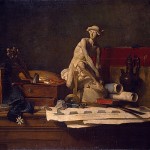 Paragone Studies (Flint, 17-19 Sep 15) Paragone Studies (Flint, 17-19 Sep 15)
Flint Institute of Arts, Flint, MI, September 17 – 19, 2015
Deadline: Jun 30, 2015
4th Annual International Conference in Paragone Studies
The 4th Annual International Conference in Paragone Studies is hosted by the Society for Paragone Studies at the Flint Institute of Arts and in partnership with the University of Michigan-Flint.
The Society is dedicated to the study of the history of artistic rivalry from all eras and artistic media. Speakers are invited to present on topics covering any period.. Topics might include, but are not limited to, inter-arts rivalries or those associated with aesthetic theory, patronage, digital culture, material culture, arts institutions, individual artists, nationalism, etc. If you are a practicing artist . . . → En lire plus
Posté par apahau, le 22 avril 2015;
- Date limite : 30 juin 2015
- Date et lieu du colloque : 15-22 septembre 2016, Pékin, CIHA
 The appearance of transcultural visual forms in societies across the world has elicited significant scholarly attention in recent years. New art histories have utilized trade networks, migration patterns, and conflict zones as the locus of enquiry to engage with the question of translation and change on a global scale. The Black Atlantic, the Indian Ocean littoral, the Pacific Rim, the Silk Route, the Sub-Saharan Trail, and the Mediterranean world, among others, have thus emerged as key geopolitical constellations that have shaped the pluralistic topography of intercultural flows. While this plurotopic hermeneutics has allowed scholars to identify a set of intercultural economic, political, and geographic formations as central to theorizing translation and change, we are yet to fully confront the conceptual . . . → En lire plus The appearance of transcultural visual forms in societies across the world has elicited significant scholarly attention in recent years. New art histories have utilized trade networks, migration patterns, and conflict zones as the locus of enquiry to engage with the question of translation and change on a global scale. The Black Atlantic, the Indian Ocean littoral, the Pacific Rim, the Silk Route, the Sub-Saharan Trail, and the Mediterranean world, among others, have thus emerged as key geopolitical constellations that have shaped the pluralistic topography of intercultural flows. While this plurotopic hermeneutics has allowed scholars to identify a set of intercultural economic, political, and geographic formations as central to theorizing translation and change, we are yet to fully confront the conceptual . . . → En lire plus
Posté par Pascale Dubus, le 22 avril 2015;
- Date limite : 22 juin 2015
- Date et lieu du colloque : 6-8 avril 2016, Clermont-Ferrand (Maison des Sciences de l’Homme) ; Aubusson (Cité de la Tapisserie) ; Limoges (musée national Adrien Dubouché)
 « L’invention partagée », expression que Michel Hérold a pu employer pour mettre en lumière la responsabilité plurielle de l’aspect des œuvres[1], est le thème général de ce colloque international qui entend réunir des spécialistes de tous domaines des arts décoratifs et visuels et de toutes périodes, afin de mieux cerner l’aspect collectif de la création ou de la production. « L’invention partagée », expression que Michel Hérold a pu employer pour mettre en lumière la responsabilité plurielle de l’aspect des œuvres[1], est le thème général de ce colloque international qui entend réunir des spécialistes de tous domaines des arts décoratifs et visuels et de toutes périodes, afin de mieux cerner l’aspect collectif de la création ou de la production.
Tout au long du processus historique, on peut constater dans de nombreux cas des différences notables d’apparence dues à l’adaptation ou à l’exécution à partir des modèles d’origine. Dans les cas de . . . → En lire plus
Posté par Denis Dubois, le 22 avril 2015;
- Date limite : 31 juillet 2015
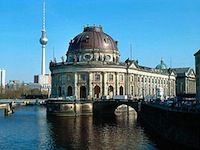 Launched in 2009, the International Scholarship Program offers scholars from around the world the opportunity to spend one to three months on a research residency at the Staatliche Museen zu Berlin. The program supports research projects that bear direct relation to the diverse institutions and rich collections of the Staatliche Museen zu Berlin. It aims to strengthen the Staatliche Museen zu Berlin’s position within the international scholarly network and is therefore aimed specifically at foreign scholars who do not reside in Germany. The program especially promotes young researchers. The scholarships allow researchers to work on their project and make professional contacts at the Staatliche Museen zu Berlin. . . . → En lire plus Launched in 2009, the International Scholarship Program offers scholars from around the world the opportunity to spend one to three months on a research residency at the Staatliche Museen zu Berlin. The program supports research projects that bear direct relation to the diverse institutions and rich collections of the Staatliche Museen zu Berlin. It aims to strengthen the Staatliche Museen zu Berlin’s position within the international scholarly network and is therefore aimed specifically at foreign scholars who do not reside in Germany. The program especially promotes young researchers. The scholarships allow researchers to work on their project and make professional contacts at the Staatliche Museen zu Berlin. . . . → En lire plus
Posté par Denis Dubois, le 21 avril 2015;
- Date limite : 30 juin 2015
- Date et lieu de la journée d'études : 11 septembre 2015, Lille, Université Lille 3
 Élément fondamental de notre univers, phénomène physique, marqueur du temps et des saisons, critère esthétique… la « lumière » a été déclarée thématique de l’année 2015 par Les Nations- Unies. Élément fondamental de notre univers, phénomène physique, marqueur du temps et des saisons, critère esthétique… la « lumière » a été déclarée thématique de l’année 2015 par Les Nations- Unies.
À cette occasion, nous vous proposons donc de réfléchir ensemble dans le cadre d’une journée d’étude à la notion de « lumière » dans l’histoire et l’histoire de l’Art. De même, l’idée de “lumière(s)” appelle à s’interroger sur ses contraires, comme l’obscurité ou l’obscurantisme, etc.
Pour mieux saisir l’ampleur et la richesse de cette question, nous vous proposons d’articuler cette journée d’études autour de quatre axes, non restrictifs, à savoir, la lumière comme :
– Élément physique, la lumière fait partie de la vie de l’humanité depuis . . . → En lire plus
Posté par Sébastien Bontemps, le 21 avril 2015;
- Date et lieu du colloque : 21-22 mai 2015, ETH Zurich, Hönggerberg, Stefano-Franscini-Platz 5, Room HIL E3
 Crisis: Art and Decision (Zurich, 21-22 May 15) Crisis: Art and Decision (Zurich, 21-22 May 15)
ETH Zurich, CH, May 21 – 22, 2015
Annual conference of the Swiss Association of Art Historians (VKKS | ASHHA) in cooperation with the Comité International d’Histoire de l’Art (CIHA), the Institute for the History and Theory of Architecture (gta), ETH Zurich, and the Institute of Art History, University of Bern
THURSDAY, MAY 21, 2015
ETH Zurich, Hönggerberg, Stefano-Franscini-Platz 5, Room HIL E3
09.00 Welcome and Introduction by Philip Ursprung, Institute for the History and Theory of Architecture (gta), ETH Zurich; Peter J. Schneemann, Institute of Art History, University of Bern; Jan Blanc, Département d’histoire de l’art et de muséologie, Université de Genève
09.15 Critical Epistemology: Art and the “General Crisis of . . . → En lire plus
Posté par Matthieu Lett, le 20 avril 2015;
- Date limite : 10 mai 2015
- Date et lieu du colloque : 5-7 novembre 2015, Évora, Colégio do Espírito Santo (University of Évora)
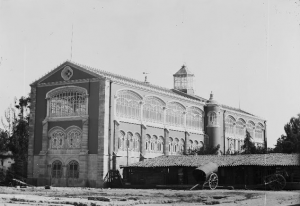 The European palaces established more than mere residences of monarchs, princes, cardinals, aristocrats and bourgeois. They were centers of power, solid social and political symbols, and also production centers for culture, arts and science. On the other hand, they played a fundamental role by motivating the renovation and expansion of cities. In a broad sense, we can consider the palace as a center that marked not only the inner spaces, but also its surroundings. Starting from this premise and taking the opportunity of the celebrations of the 500th anniversary of the construction of the so called Palácio de D. Manuel in Évora, this is . . . → En lire plus The European palaces established more than mere residences of monarchs, princes, cardinals, aristocrats and bourgeois. They were centers of power, solid social and political symbols, and also production centers for culture, arts and science. On the other hand, they played a fundamental role by motivating the renovation and expansion of cities. In a broad sense, we can consider the palace as a center that marked not only the inner spaces, but also its surroundings. Starting from this premise and taking the opportunity of the celebrations of the 500th anniversary of the construction of the so called Palácio de D. Manuel in Évora, this is . . . → En lire plus
Posté par apahau, le 16 avril 2015;
- Date limite : 30 mai 2015
- Date de publication : Juillet 2015
 The Chitrolekha Magazine (www.chitrolekha.com) is inviting articles, essays and photo essays on the visual culture on the Indian subcontinent right from the prehistoric to the modern times. The Chitrolekha Magazine (www.chitrolekha.com) is inviting articles, essays and photo essays on the visual culture on the Indian subcontinent right from the prehistoric to the modern times.
Submissions can be made on the following topics/areas (not exclusive but suggestive):
New Perspectives on the origin of Art in the Indian Subcontinent Issues in the History of Art in the Indian Subcontinent Religious Architecture and Philosophy Aesthetics of Town-planning Paintings in the Indian Subcontinent—history, forms and evolution Sacred sculptures—interpretations of the iconographies. Religious movements and the production of art objects Theories of Art Artisans—conditions and creations Foreign influences and their incorporation Ethnography, ethnicity and . . . → En lire plus
Posté par Olivier Bonfait, le 13 avril 2015;
- Date limite : 30 juin 2015
 The Chinese CIHA Committee will host the 34th CIHA World Congress of Art History in Beijing and invites art historians from all over the world to attend and discuss « Terms ». Art and cultural historians from all over the world, from a vast cross-section of disciplines and fields of professional interest are called upon to discuss together ways of seeing, describing, analyzing and classifying art works. The topics are divided into 21 sections. The sections should enable comparisons to be made between different viewpoints and methods. Each panel will compose a program reflecting the CIHA’s commitment to the idea of diversity, . . . → En lire plus The Chinese CIHA Committee will host the 34th CIHA World Congress of Art History in Beijing and invites art historians from all over the world to attend and discuss « Terms ». Art and cultural historians from all over the world, from a vast cross-section of disciplines and fields of professional interest are called upon to discuss together ways of seeing, describing, analyzing and classifying art works. The topics are divided into 21 sections. The sections should enable comparisons to be made between different viewpoints and methods. Each panel will compose a program reflecting the CIHA’s commitment to the idea of diversity, . . . → En lire plus
Posté par Olivier Bonfait, le 13 avril 2015;
- Date limite : 10 mai 2015, 10 mai 2015
PhD studentship: Oriental Arcadia (Exeter/Shanghai) University of Exeter, September 10, 2015 – September 9, 2018 Application deadline: May 10, 2015
Doctoral studentship: Oriental Arcadia: The entangled histories of living with nature, China and Europe
T he College of Humanities at the University of Exeter is offering a PhD studentship beginning in September 2015 (open to UK/EU and International students): all tuition fees paid an annual maintenance grant for three years. The maintenance grant will be £13,863 per year. he College of Humanities at the University of Exeter is offering a PhD studentship beginning in September 2015 (open to UK/EU and International students): all tuition fees paid an annual maintenance grant for three years. The maintenance grant will be £13,863 per year.
In conjunction with the EU Marie Curie-funded project ‘Nature Entangled’ at the University of Exeter, we are seeking candidates with an interest in exploring the intercultural relations associated with the idea . . . → En lire plus
|
Équipe Rédacteur en chef : Olivier Bonfait.
Rédacteurs : Elliot Adam (Moyen Age) ; Nicolas Ballet (XX-XXIe siècles) ; Matthieu Fantoni (musées) ; Antonella Fenech Kroke (bourses) ; Vladimir Nestorov (Lettre mensuelle)
Administrateur web : Matthieu Lett.
ancien éditeur : Pascale Dubus
anciens rédacteurs : Gautier Anceau, Sébastien Bontemps, Damien Bril ; Sébastien Chauffour ; Ludovic Jouvet ; Aude Prigot
|
 Shared invention (Clermont-Ferrand, Aubusson, Limoges, 6-8 Apr 16) Clermont-Ferrand – Aubusson – Limoges, April 6 – 08, 2016
Shared invention (Clermont-Ferrand, Aubusson, Limoges, 6-8 Apr 16) Clermont-Ferrand – Aubusson – Limoges, April 6 – 08, 2016

















